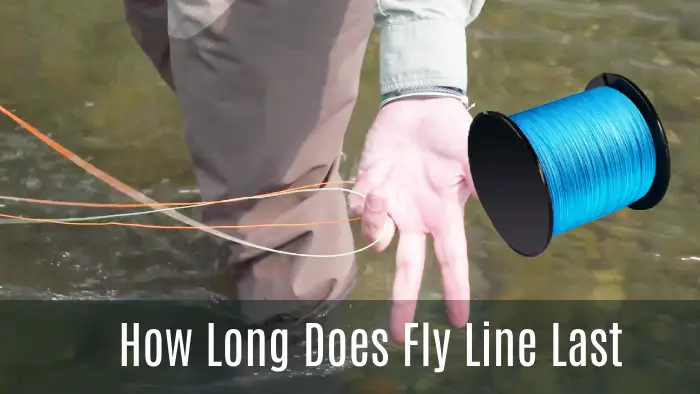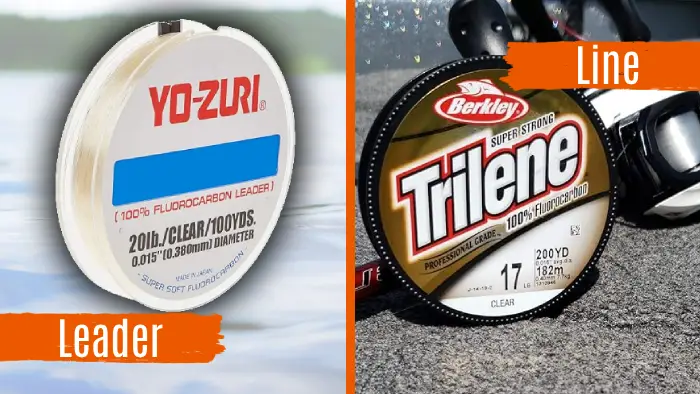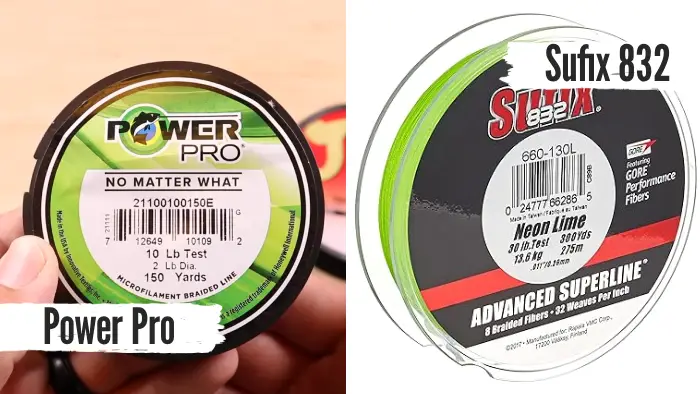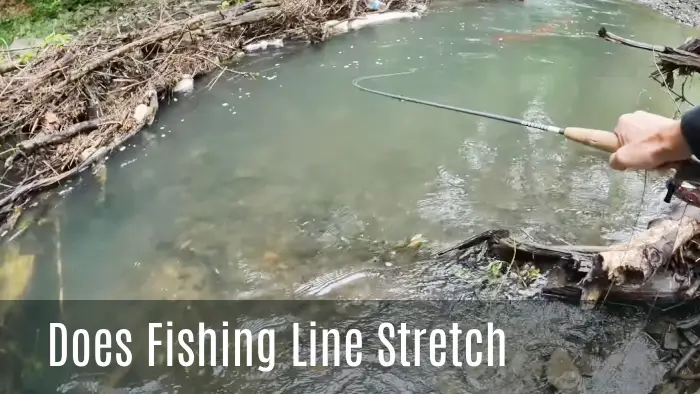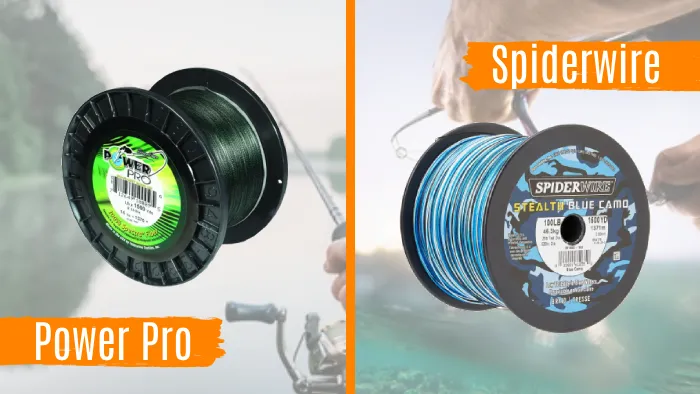How Long Does Fly Line Last: 6 Determining Factors
The lifespan of a fly line is one of the most critical elements to consider for fly fishing enthusiasts. It plays a vital role in determining how long the line will remain effective and whether or not it will require replacement or maintenance.
As a fly angler, you want to maximize your investment and ensure that you have a reliable fly line. But how long can you expect your fly line to last?
On average, a typical fly line is designed to last for approximately 100 to 250 uses. The lifespan of your fishing line can be significantly extended over 2 decades if you maintain it effectively.
We will discuss the factors that determine the lifespan of a fly line, how to prolong its lifespan, and what are the signs that indicate that a fly line should be replaced.
How Long Does Fly Line Last: 6 Things That Determine It
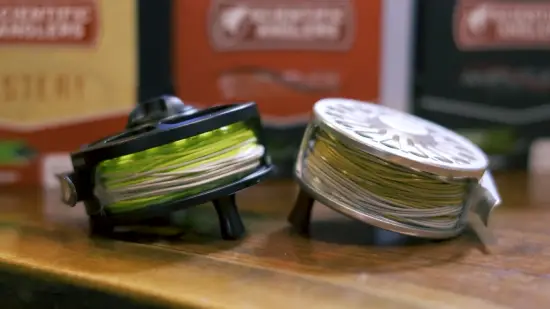
The lifespan of your fly line is determined by several factors, including:
- Use frequency
- Water conditions
- Maintenance
- Exposure to sunlight
- Storage
- Core strength
Now, examine each factor in detail to better understand what to do and what not to do to maintain the longevity of your fishing line.
1. Use Frequency
When using a fly line frequently, factors such as the number of use days and proper maintenance play a crucial role in determining its longevity.
The more you use your fly line, the shorter its lifespan. Each full day of fly fishing is considered one ‘use day.’ A well-maintained fly line should last for approximately 250 use days. For intensive users like full-time fly fishing guides, this might translate to a season or two.
On the other hand, occasional anglers can enjoy the same fly line for up to ten years. Therefore, it’s important to keep track of your use days and take proper care of your fly line to ensure optimal longevity.
2. Water Conditions
Factors such as the water conditions you fish in can significantly impact the longevity of your fly line.
Saltwater, for example, can be particularly harsh on fly lines due to its corrosive nature. The high salt content can cause the line to deteriorate faster, reducing performance and overall durability.
Sandy beaches can also cause damage as abrasive particles can grind against the line’s surface, causing abrasions and potential weakening. Similarly, waters with high sediment content, such as muddy or silty rivers, can contribute to quicker wear and tear.
These particles can cause friction, increasing frictional forces on the line and potentially reducing its lifespan.
3. Maintenance
Regular maintenance is essential for ensuring the longevity of your fly fishing line. Neglecting proper care can lead to a shorter lifespan, while regular maintenance
Regularly inspect your fly line for any signs of wear or damage, such as cracks, nicks, or fraying, and replace it if necessary.
4. Exposure to Sunlight
To determine the longevity of your fly line, consider the impact of sunlight exposure. Prolonged exposure to sunlight can degrade the fishing line over time. However, modern fly lines are equipped with UV stabilizers that help reduce UV degradation.
For fly lines manufactured after 2000, if the package hasn’t been opened, the fishing line should remain in good condition. It’s recommended to visually inspect the line by stretching it to remove any coil loops and check for any signs of damage or wear.
5. Storage
Proper storage significantly impacts the longevity of your fly fishing line. When storing your fly line, there are a few factors to consider.
It’s important to keep your reel and fly line away from direct sunlight. Exposure to sunlight can cause the line to degrade and lose its integrity over time.
Storing your gear in a cool, dry place is also crucial. High temperatures and humidity can accelerate the breakdown of the line’s coating, leading to premature wear and reduced performance.
Furthermore, avoiding any sharp objects or abrasive surfaces when storing your fly line will help prevent cuts or abrasions that could weaken the line.
6. Core Strength
To determine the longevity of your fly line, it’s important to consider the factors that contribute to its core strength. The core of a fly line is responsible for its overall strength and durability.
Modern fly lines typically have a core with a breaking strength of around 30 pounds. This core is what gives the line its ability to withstand the pressure and tension when casting and fighting fish.
However, it’s crucial to ensure that the core isn’t damaged or nicked, as this can compromise the strength of the fly line. Any damage to the core can lead to the line becoming unreliable and needing to be replaced.
How to Prolong the Lifespan of a Fly Line?
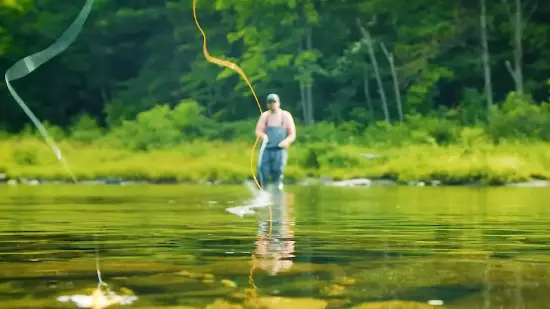
To prolong the lifespan of your fly line, you can take several key actions.
1. Cleaning
Regularly cleaning your fly line is essential for prolonging its lifespan and maintaining its quality. By removing dirt, debris, and other contaminants, you can prevent them from accumulating and causing damage over time.
To clean your fishing line, wet a soft cloth or sponge with warm water. Add a mild soap or detergent, ensuring it isn’t abrasive or corrosive.
Gently scrub the entire length of the line, paying special attention to any areas with visible dirt or residue.
Rinse the line thoroughly with clean water to remove any soap residue. After cleaning, allow the fly line to air dry completely before storing it.
2. Line Treatment (Dressing)
Regularly applying a suitable fly line dressing helps extend its lifespan and maintain optimal performance.
A quality fly line dressing serves several purposes. Firstly, it lubricates the line, reducing friction and allowing it to shoot through the guides smoothly. This improves casting distance and prevents the line from wearing out prematurely.
The dressing provides a protective layer, shielding the line from harmful elements such as UV rays, dirt, and debris. These contaminants can degrade the line over time, decreasing performance and durability.
A good fly line dressing restores the line’s floating ability, ensuring it rides high on the water, increasing visibility and strike detection.
3. Proper Handling
To prolong the lifespan of your fly line and ensure optimal performance, it’s important to handle it properly.
- Avoid stepping on the line, as this can cause damage.
- When stripping the line off the reel, be cautious to prevent rubbing against the reel frame, as this can wear off the coating.
- Additionally, avoid excessive bending or kinking of the line, as this can weaken its strength and affect its casting abilities.
4. Stretch the Line
To maximize the lifespan of your fly line, regularly stretch it before each fishing session. Stretching the line helps to remove loops that may have formed due to coiling onto the reel. This simple step can have several benefits.
It can increase your casting distance by ensuring a smooth and uninterrupted flow of line through the guides. Stretching the line can help make it float higher on the water, which is particularly useful when fishing dry flies.
To stretch the line, hold the end of the line and pull it firmly through your hands, applying even pressure along its length. Repeat this process a few times to ensure the line is properly stretched before you begin fishing.
5. Avoid Cutting the Tip
To prolong the lifespan of your fly line, it’s important to avoid cutting the tip section beyond a foot, as this can impact your casting efficiency. The tip section of a fly line is designed to provide optimal performance during casting.
Any alterations or excessive cutting can disrupt the balance and weight distribution, leading to decreased accuracy and distance.
Additionally, cutting the tip section too much can affect the line’s ability to properly load the rod, resulting in difficulty in achieving the desired casting distance. Maintaining the tip section’s integrity is crucial to ensure smooth and efficient casting.
If you need to adjust the length of your fly line, it’s recommended to trim it gradually and evenly from both ends while avoiding excessive cutting of the tip.
What Are the Indications That Signal the Need for Replacing a Fly Line?
If you want to know when to replace your fly line, there are a few key indications to look out for.
1. Noticeable Cracks
You should replace your fly fishing line if you notice noticeable cracks in the coating when fly fishing in Virginia or at your preferred fishing spots. These cracks, commonly found in the first 30-50 feet of the line, clearly indicate that the line has reached the end of its lifespan.
The cracks typically appear as small, hairline fractures on the surface of the line’s coating. They can occur due to regular wear and tear or improper care, such as exposure to extreme temperatures or prolonged exposure to the sun’s ultraviolet rays.
These cracks can significantly impact the performance of the fly line, leading to decreased casting smoothness and accuracy. To ensure optimal performance and maintain a seamless fishing experience, it’s crucial to replace the fly line once noticeable cracks start to appear.
2. Wear on the Loop
Inspect the loop on your fly line regularly for signs of wear that may indicate the need for replacement. The loop is a crucial part of the fly line as it connects the leader, and excessive wear can lead to potential problems.
Look for any fraying or thinning of the loop material. If you notice any significant abrasions or cuts, it clearly indicates that the loop is worn out and needs to be replaced. Additionally, check for any signs of stretching or deformation in the loop. A stretched loop can compromise its strength and reliability.
3. Reduced Casting Smoothness
To determine if your fly line needs to be replaced, pay attention to any decrease in casting smoothness, as this can indicate a decline in the line’s performance.
When cracks start to show in the line’s coating, it can lead to a noticeable reduction in casting smoothness. This means that your casts may not be as accurate as before, and you may struggle to achieve the desired distance and control.
The cracks in the coating can disrupt the flow of the line through the guides, causing it to catch and create friction.
As a result, your casting motion becomes less fluid, and the line may not shoot out as smoothly as it once did. If you notice a significant decline in casting smoothness, it clearly indicates that your fly line is no longer performing at its best and should be replaced to ensure optimal casting performance.
4. Sinking Instead of Floating
When cracks start to show in the line’s coating, leading to a decline in casting smoothness, one indication that signals the need for replacing a fly line is when it no longer floats effectively.
If your fly line is designed to float, you may notice that it starts sinking instead. This can be attributed to tiny scrapes or cuts in the fishing line’s coating, causing it to become waterlogged. As a result, the line loses its buoyancy and fails to stay on the water’s surface as it should.
This can greatly affect your ability to present the fly properly and can lead to missed opportunities. When your fly line no longer floats effectively, it’s time to consider replacing it to maintain optimum performance on the water.
What is the recommended frequency for cleaning your fly line?
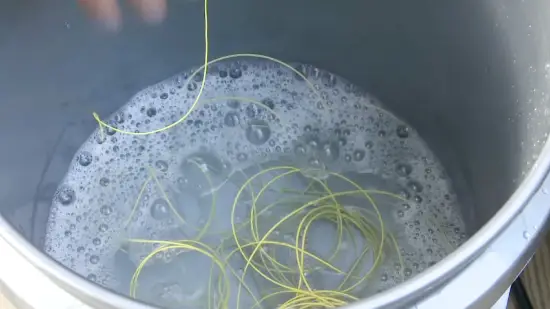
For optimal performance in your fly fishing endeavors, cleaning your fly line every 4 or 5 fishing trips is typically recommended, provided the water conditions are relatively clean.
However, if you’re fishing in particularly dirty or harsh environments, more frequent cleaning may be necessary to keep your line in top-notch condition.
Do you have to dry off your fly line after each fishing trip?
After your fishing trip, it’s a good practice to dry off your fly line. Removing any accumulated moisture and cleaning it as needed helps maintain the line’s longevity and performance.
Proper drying and maintenance can ensure your fly line lasts longer and continues to perform well on your next fishing adventure.
Maximize Your Fly Line Lifespan: Smart Habits for Successful Angling
Fly lines can last for many fishing trips when properly cared for and maintained. You can take steps to extend their durability by understanding the factors that influence their lifespan, like usage frequency, water conditions, maintenance, sunlight exposure, storage, and core strength.
Regular cleaning and line treatment, cautious handling, and avoiding over-trimming the tip section are essential practices. When you see noticeable cracks, wear on the loop, reduced casting smoothness, or a sinking line, it’s time to consider replacing your fly line for optimal performance.A little care goes a long way in ensuring that your fly line serves you well on your angling adventures and keeps your mind healthy.

